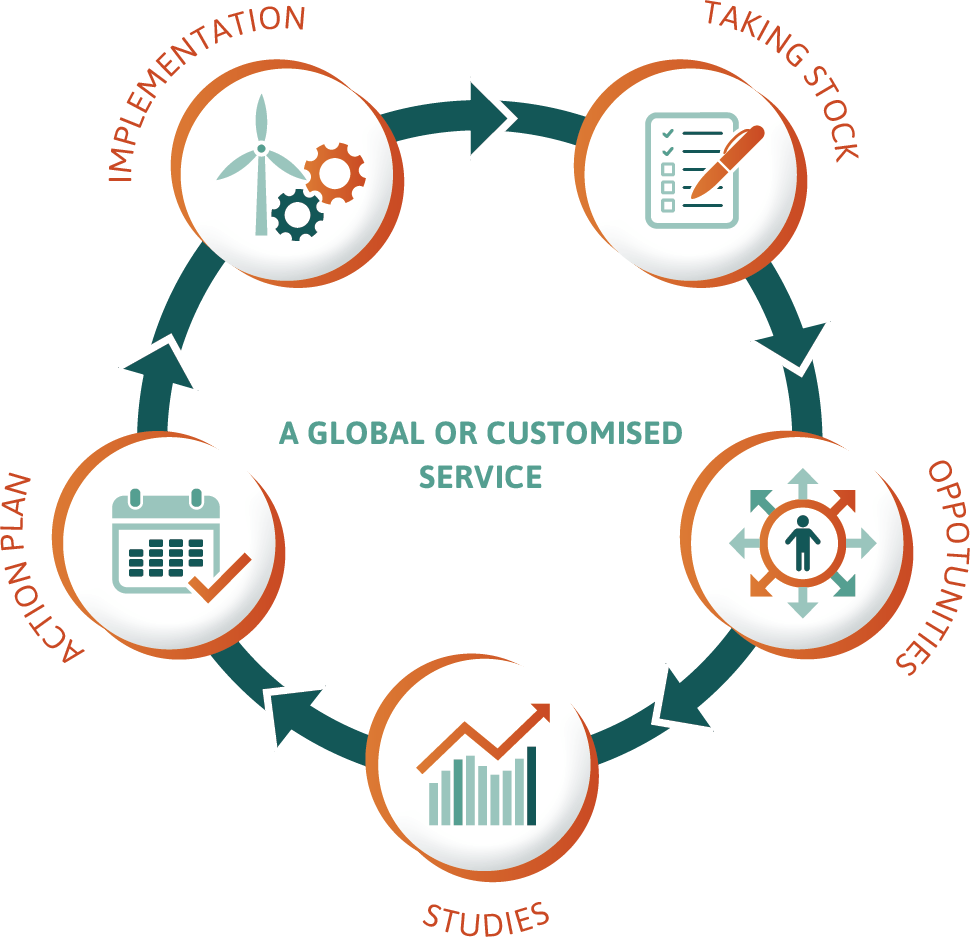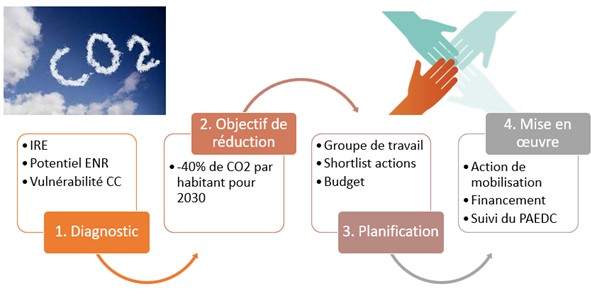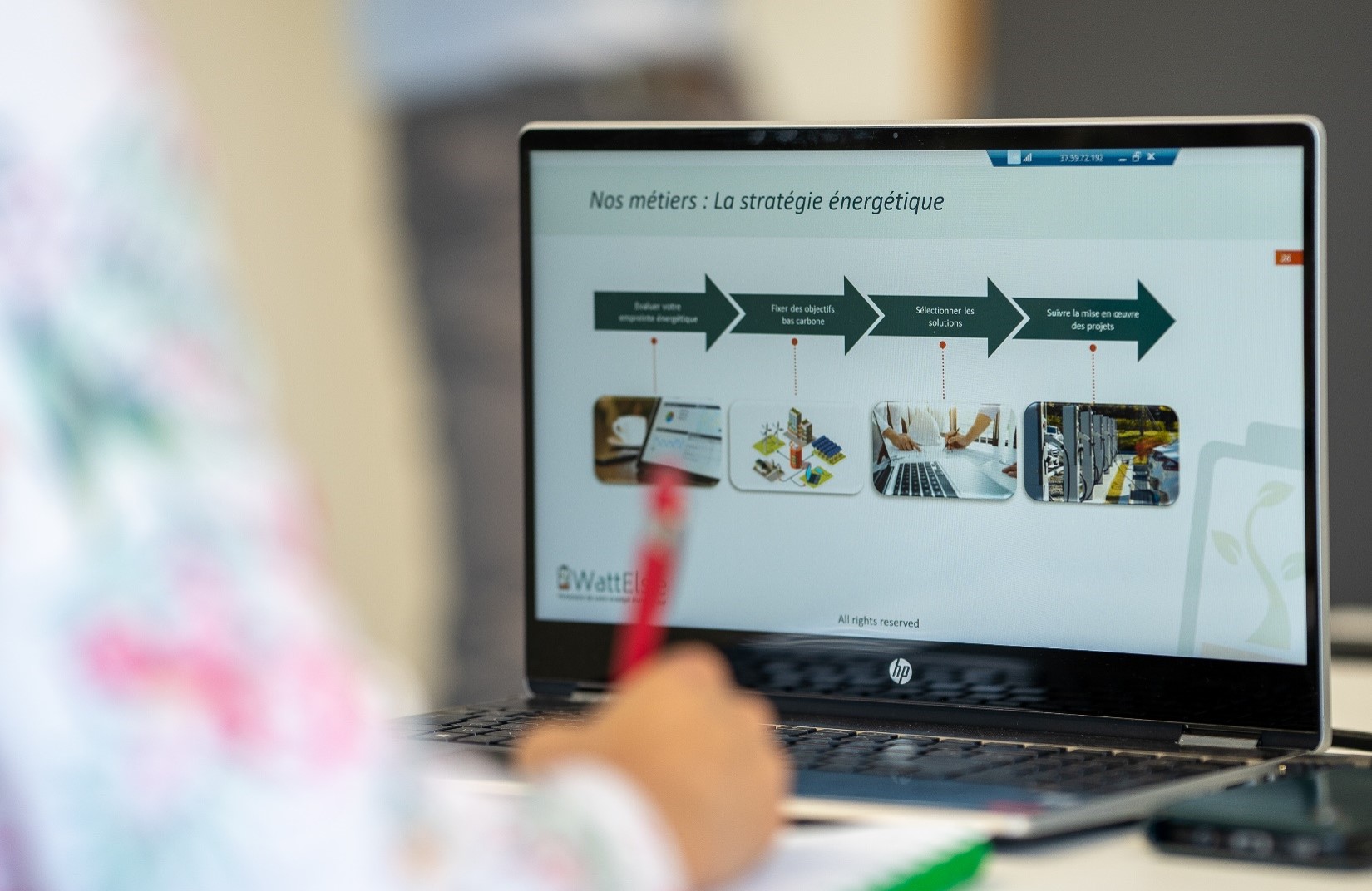Many Walloon municipalities make voluntary commitments in the fight against global warming.
This movement, initiated by the Covenant of Mayors at European level and relayed by the Walloon Region within the framework of POLLEC (Local Energy Climate Policy) campaigns, aims to establish targets for reducing greenhouse gas emissions and to define a program of concrete actions for 2030 to fight against global warming and adapt, as far as possible, to climate change. WattElse, very experienced in this area, supports several Walloon municipalities in this process each year.
What is a PAEDC ?
PAEDC is the acronym for Action Plan for Energy and Climate.
This plan can be defined at the municipal or intermunicipal level (grouping of several municipalities) and aims to list the measures allowing energy savings as well as the renewable production potential of a given territory in order to fight against global warming.
As part of the establishment of a PAEDC, the measures necessary to adapt to visible climate changes within this same territory are also discussed.
The serious floods of last year had the effect of an electric shock within certain municipalities which are now tackling the problem in a more systematic way.
The particularity of the approach lies in the fact that the municipality or inter-municipality defines commitments for its entire territory and is therefore not limited to its own heritage. This is why all actors (citizens, businesses, farmers, traders) are invited to participate in the development of the action plan so that everyone can take part.

Proven methodology and expertise
Each year, WattElse’s multidisciplinary experts support a certain number of municipalities in the development or updating of their PAEDC, taking into account their own realities and have therefore developed a qualitative methodology and expertise in the field.
The first important step in the development of a PAEDC is to carry out an energy climate diagnosis of the territory. This in-depth diagnosis includes the following:
– a reference inventory of emissions to quantify greenhouse gas emissions in the territory, all sectors combined (residential, tertiary, industrial, agriculture) and the identification of the most impacting items;
– an analysis of vulnerability to climate change by sector based on a tool developed by AWAC (biodiversity, land use planning, agriculture, tourism, etc.);
– an inventory to identify the actions already underway in the territory.

Once this inventory has been carried out and based on an analysis of the territory’s potential for energy savings and renewable production, reduction objectives are then defined for the territory and by sector in partnership with the municipality, knowing that the he objective to be achieved for 2030 is a 55% reduction in CO2 emissions compared to the reference year.
To meet this major challenge, the action plan is defined in partnership with the various stakeholders through thematic working groups. It also includes concrete and relevant actions to boost energy savings, renewable production or reduce the risks associated with climate change.
Among the measures that can be part of a PAEDC, there are among others :
– the establishment of energy renovation platforms to advise citizens on the renovation of their homes;
– the implementation of support towards companies via awareness programs and/or audits;
– support for the creation or development of citizen energy cooperatives in order to develop and finance renewable infrastructure projects (wind, PV);
– the commitment of an agricultural referent to help farmers in the implementation of adaptive measures;
– encouraging the placement of rainwater recovery tanks;
– Etc.

WattElse intervenes at all stages of the approach summarized in the diagram above and is committed to offering a realistic, independent and global vision of the energy footprint of each territory analyzed and is, moreover, able to take the relay in the implementation of any renewable energy project. And you, are you ready for 2030?

